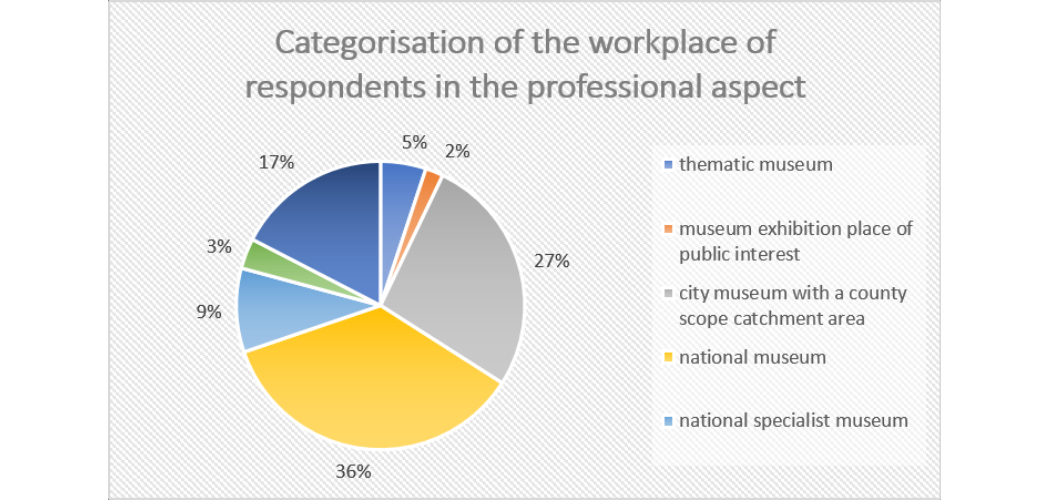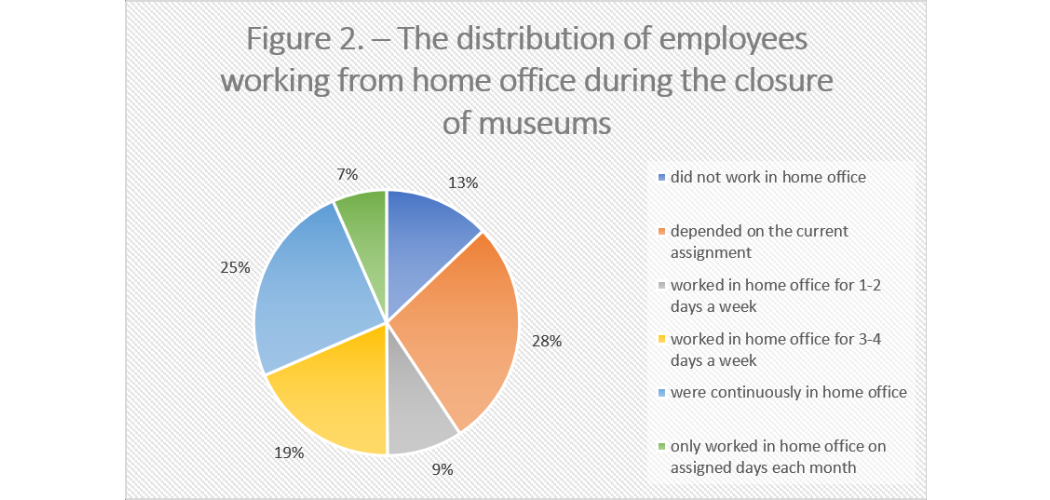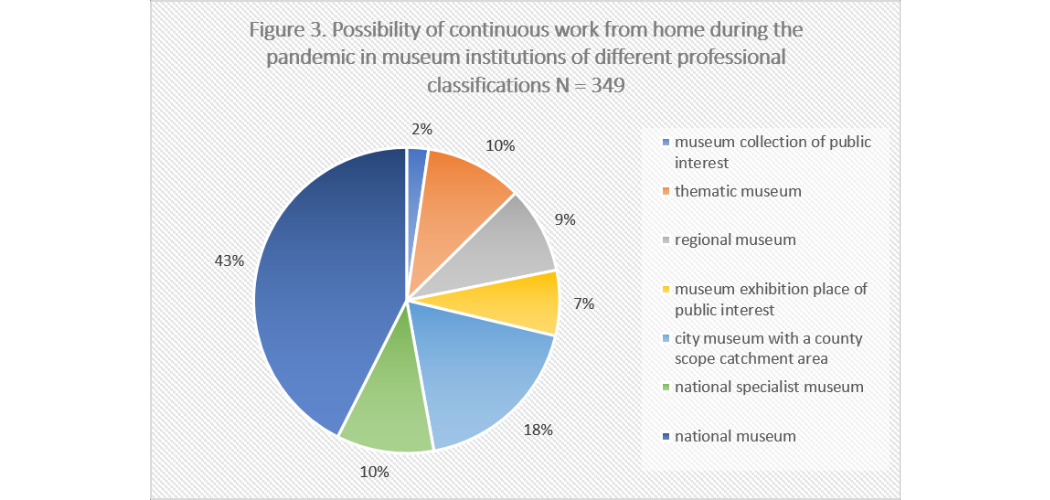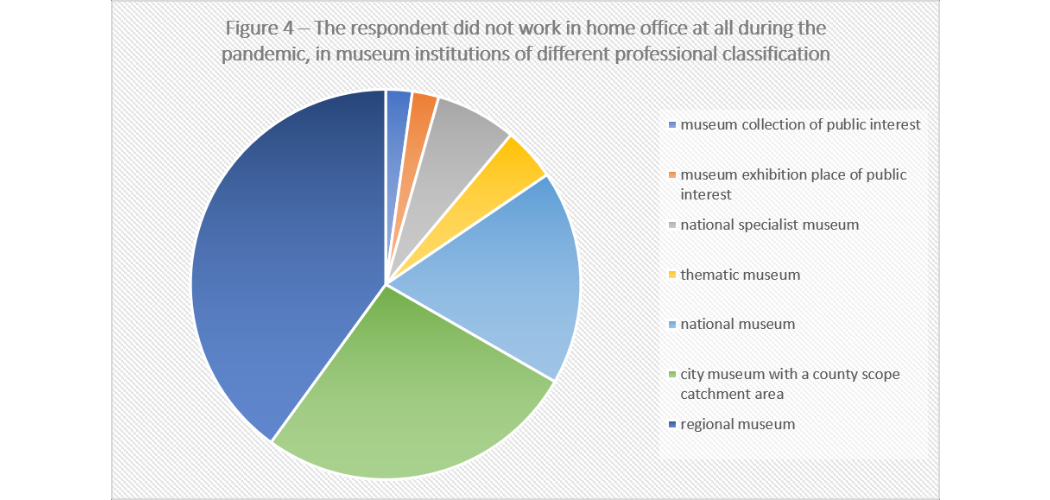
At the end of the second wave of the coronavirus pandemic, after the gradual reopening of the museums, a questionnaire survey entitled The activities and working conditions of (museum) employees during the pandemic was launched. Between 24 May and 30 July 2021, 389 respondents filled in the questionnaire. The report based on their responses will be provided in the following articles.
An important role in slowing down the spread of the coronavirus was for employers to reduce the frequency of encounters between workers where possible, to limit the number of people being present in the workplace at the same time and not to expose their employees to the risk of getting infected on the public transport. Museum work in this area has held countless opportunities, which the institutions have utilized well. Especially after the "termination" of public audience form museum spaces, the leaders tried to encourage employees to work from home or to work in a hybrid mode, if possible.
According to a January 2021 report by MOKK, more than half of the 184 responding institutions ordered part-time home office for museum employees. According to the study, most institutions (95) identified communication tasks, followed by 90 institutions in the administrative area, but 86 museum institutions mentioned research as a remote activity. 30 percent, or 61 institutions, cited creating digital content as a task that can be done while working from home. The institution-wide responses filled in by museum leaders are somewhat reflected by the research among museum employees carried out half a year later.
The graph in Figure 2 shows the diversity of the concept of home office among informants. While 45 people did not work from home at all, the 304 employees with home office experience are strongly divided about how their daily schedule was affected by this period. Of these respondents, only 87 were able to work continuously from their home, for 97 it depended on their current assignment, 65 were at home office 3-4 times per week, 32 only spent a few days a week at home, and 23 were assigned on which days of the month they can work remotely.
More than a quarter of the permanent home office workers were museologists, 13 percent were public education professionals and 8 percent were administrators. This is interesting because twenty percent of those who were not in a home office at all are also museologists, like the other categories. There is only one exception: there is a significant majority of administrators among those who work 1-2 days a week remotely. It could be seen that the opportunity to work from home did not necessarily stand or fell on the position and responsibilities.

A more interesting result is obtained by comparing the classification of museums and the possibility of continuous work in Figures 1 and 3. It is clear that the employees of national museums have been able to make greater use of this opportunity. Further data analysis revealed that 29.6 percent of the informants in the national museums were at home continuously, 24-24 percent could spend 3-4 days in home office, or it depended on their current assignment. During the course of the pandemic, in county museums, 17 percent of those asked were in home office continuously, 39.4 percent as the current assignment allowed; in regional museums 13.3 percent did it continuously, 20 percent 3-4 days a week, and 23.3 percent depending on the current situation. The situation is similar in terms of geographical distribution: in Budapest and Pest county, colleagues worked more from home than elsewhere.

The other extreme is also interesting; if we examine which institutions did not have their employees in home office at all, the proportion of urban museums with territorial and county scope increases significantly (Figure 4). Examining the informants of the regional museums separately, we can see that 30 percent could not use the opportunity of home office at all, with county museums it is 12.8 percent who could not use it and regarding national museums it stands for 6.4 percent of the employees.

The data in the national specialist museums were as follows: continuously worked from home during the curfew period: 27.3%; 3-4 days a week at home office, 24.2%; depending on current tasks, 21.2%; 1-2 days a week, 12.1%, on a given days each month, 6.1; did not work in a home office 9.1%.
Altogether 20 people from museum exhibition places and collections of public interest responded to the questionnaire. Two of them could not work in a home-office at all, 8 people were constantly working from home, 5 were working from home depending on their tasks, and the rest were going to the workplace 3-4 times a week. Of the 19 representatives of the thematic museums, two did not work in home office at all, nine did continuously, two worked from home office for a few days a week, while for others it depended on the current tasks and challenges.

Image: https://www.pxfuel.com/